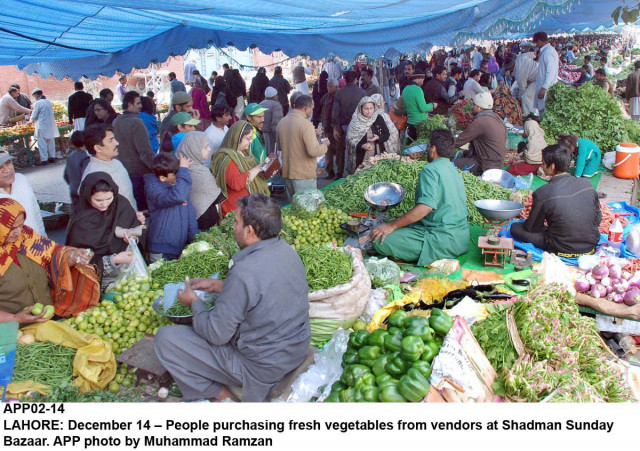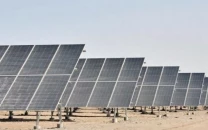Inflation slows down to 1.7%, lowest since 2003
Continuously low inflationary pressure sparks fears of deflation.

Depreciate: 3% is by how much the rupee has weakened in the past few days, after remaining stable for over one year. PHOTO: APP
The pace of increase in prices slowed down to another historic low of 1.7% in August, stoking fears of deflation but providing an opportunity to the government to let the rupee depreciate by taking advantage of the low inflation.
Inflation measured by the Consumer Price Index (CPI) - the indicator that captures prices of 481 commodities - rose just 1.7% in August on a year-on-year basis, said the Pakistan Bureau of Statistics (PBS) on Tuesday. It was the lowest level since 2003.
Inflationary pressure has been persistently low since October last year. The SBP has cut interest rate to over four-decade low of 7% in order to support growth and keep the outlook for future inflation consistent with the target.

However, the reduction in discount rate has not helped, as the government remained the largest borrower due to its inability to increase tax revenues.
Read: Inflation dips to 12-year low at 1.8% in July
While the CPI is gradually slipping towards deflation, the Wholesale Price Index (WPI) is already depicting deflationary trends and was negative by half a percentage point for the ninth consecutive month. The negative trend in wholesale prices has slowly started reflecting in retail prices, mainly due to a steep decline in rates of food items and a reduction in crude oil prices in the international market.
“The economy has landed in the deflationary zone and the government is not taking it seriously,” said Dr Ashfaque Hasan Khan, Dean School of Social Sciences and Humanities of the National University of Science and Technology.
He said the government ought to change its tight fiscal policy and should give fiscal stimulus to lift the economy.
Owing to the plunge in global commodity prices, rigidity in the exchange rate and heavy domestic taxation, the country’s exports have been consistency falling for the last many months.
According to one school of thought, the government should take advantage of the low inflationary environment and let the rupee shed some value against the greenback.
However, the government remains sensitive to the exchange rate due to the negative impact of devaluation on imported goods, particularly fuel and electricity prices. The rupee depreciation will also increase the cost of debt servicing, as the PML-N government has heavily borrowed from external sources to finance the budget and increase its foreign currency reserves. After remaining stable for over one year, the rupee shed its value by about 3% in the past few days, which the experts said was still not sufficient to provide a boost to exports.
“The rupee is overvalued but research does not show that exports will pick up in the medium to long term after devaluation of the currency,” said Dr Vaqar Ahmad, Deputy Executive Director of the Sustainable Development Policy Institute.
Read: Expectations of low inflation coming to an end
He said the reason for that was the extremely narrow base of value-added product exports.
The federal government and the State Bank of Pakistan do not see any major change in the inflationary trend, at least for a couple of months. Government expectations are that due to the high base effect, the overall inflation will continue to remain on the current downward path.
Even after that, there will be no major deviation from the official target of 6% inflation for fiscal year 2015-16.
The fuel and food-adjusted inflation also slowed down to 4% year-on-year in August, a reduction of 0.1% over the previous month. Independent experts give more importance to the core inflation, which excludes volatile food and energy prices, which are prone to seasonal shocks.
According to the PBS, for the second month in a row, prices of perishable food items decreased over 8% year-on-year in August. The prices of non-perishable food items also fell half a percentage point.
Published in The Express Tribune, September 2nd, 2015.
Like Business on Facebook, follow @TribuneBiz on Twitter to stay informed and join in the conversation.






1675249047-0/image-(18)1675249047-0-208x130.webp)












COMMENTS
Comments are moderated and generally will be posted if they are on-topic and not abusive.
For more information, please see our Comments FAQ